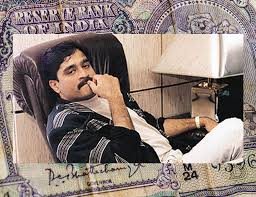Mumbai Noir: How India’s Maximum City Became the Star of Its Own Crime Stories
Introduction: Mumbai as More Than a Setting
In the world of Indian movies, Mumbai is more than just a backdrop - it’s a leading character. The city’s maze-like alleys, soaring skyscrapers and teeming streets have made the perfect backdrop for filmmakers to tell tales of crime, ambition and survival. That’s the theory behind “Mumbai Noir,” a concept of genre in which the city plays a role in determining the narrative, tone and characters in a film.
The Genesis of Mumbai Noir
Early Influences and the Birth of a Genre
The seeds of Mumbai Noir were sown in the 1950s with films like Baazi (1951), directed by Guru Dutt. This film introduced audiences to a world of moral ambiguity, jazz clubs, and shadowy figures, setting the tone for future noir narratives in Indian cinema. Drawing inspiration from Hollywood’s noir aesthetics, these films adapted the genre to reflect the unique socio-political landscape of Mumbai.(The Tribune)
Evolution Through the Decades
As India underwent significant changes post-independence, so did its cinema. The 1970s and 1980s saw a shift towards more gritty and realistic portrayals of urban life. Films like Deewaar (1975) and Parinda (1989) delved deep into the underbelly of Mumbai, highlighting the struggles of individuals caught in the web of crime and corruption. These narratives mirrored the city’s own battles with rapid urbanization and socio-economic disparities.(The New Yorker, Vanity Fair)
Mumbai: The Living, Breathing Protagonist
The City’s Duality
Mumbai’s unique dichotomy—where opulence coexists with destitution—provides a rich tapestry for storytelling. The city’s ability to offer both dreams and despair makes it an ideal setting for noir narratives. Filmmakers harness this duality to craft stories that resonate with authenticity and emotional depth.
Architectural Influence on Narrative
The city’s architecture, from colonial-era buildings to modern high-rises, plays a pivotal role in setting the tone of Mumbai Noir films. The juxtaposition of old and new structures mirrors the internal conflicts of characters torn between tradition and modernity.(OpenEdition Journals)
Iconic Films That Define Mumbai Noir
Satya (1998)
Directed by Ram Gopal Varma, Satya is often credited with redefining the gangster genre in Indian cinema. The film’s raw portrayal of Mumbai’s underworld and its intricate character studies set a new benchmark for realism in storytelling. Satya not only captivated audiences but also inspired a new wave of filmmakers to explore the darker facets of urban life.(Wikipedia, Vanity Fair)
Black Friday (2004)
Anurag Kashyap’s Black Friday offers a chilling recount of the 1993 Bombay bombings. Through meticulous research and gripping narratives, the film delves into the events leading up to the tragedy, providing a stark commentary on communal tensions and systemic failures.(Vanity Fair)
Sacred Games (2018)
This Netflix series, based on Vikram Chandra’s novel, intertwines the lives of a police officer and a crime lord, set against the backdrop of Mumbai’s complex socio-political landscape. Sacred Games masterfully uses the city’s multifaceted nature to enhance its intricate plotlines and character arcs.(The New Yorker)
Thematic Elements in Mumbai Noir
Moral Ambiguity
A hallmark of noir cinema is the exploration of moral gray areas. Characters in Mumbai Noir often grapple with ethical dilemmas, reflecting the complexities of urban life where right and wrong are seldom clear-cut.
The Struggle for Identity
In a city teeming with millions, the quest for individual identity becomes a recurring theme. Protagonists often find themselves lost in the crowd, battling societal norms and personal demons to carve out their own space.
Corruption and Power Dynamics
Mumbai Noir frequently exposes the intricate web of corruption that permeates various facets of urban life, from politics to law enforcement. These narratives shed light on the power struggles that define the city’s socio-political fabric.
The Future of Mumbai Noir
As Mumbai continues to evolve, so does its cinematic portrayal. Emerging filmmakers are experimenting with narratives that blend traditional noir elements with contemporary issues, such as digital surveillance, cybercrime, and the gig economy. With the rise of streaming platforms, there’s a growing appetite for stories that delve deep into the city’s psyche, ensuring that Mumbai Noir remains a dynamic and ever-relevant genre.(CrimeReads)
Mumbai Noir is an ode to the fact that something about Bombay stays with you, something about Bombay gets under your skin and never quite leaves. And by making the city itself a main character, filmmakers have generated stories that ring true in all their confused, heartfelt, and edifying glory. For as long as the city continues to fire the imaginations of its chroniclers, Mumbai Noir will be whatever it needs to be the way life is in the city itself.
Frequently Asked Questions (FAQ)
Q1: What defines Mumbai Noir in Indian cinema?
Mumbai Noir refers to a genre of films where Mumbai is portrayed not just as a setting but as a central character. These films delve into the city’s complexities, highlighting themes of crime, moral ambiguity, and socio-political dynamics.
Q2: How did Mumbai Noir originate?
The genre traces its roots to the 1950s with films like Baazi, which introduced noir aesthetics to Indian cinema. Over the decades, as Mumbai underwent significant transformations, filmmakers began to reflect these changes through gritty, realistic narratives.(The Tribune)
Q3: What are some must-watch Mumbai Noir films?
Notable films in this genre include Satya (1998), Black Friday (2004), Sacred Games (2018), Deewaar (1975), and Parinda (1989). Each offers a unique perspective on Mumbai’s multifaceted nature.(Vanity Fair)
Q4: How has Mumbai Noir evolved with modern cinema?
With the advent of digital platforms and changing audience preferences, Mumbai Noir has embraced contemporary themes like cybercrime and digital surveillance, ensuring its relevance in today’s cinematic landscape.
Q5: Why is Mumbai considered a central character in these films?
Mumbai’s unique blend of cultures, socio-economic disparities, and relentless energy provides a rich backdrop that influences characters and narratives, making the city an integral part of the storytelling process.